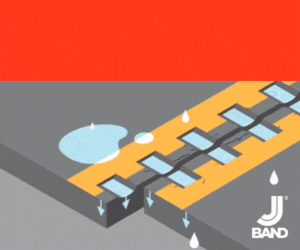 It’s November, and for many of us, that means that the paving season is coming to an end. So, it’s a good time to step back and see what we need to do to wrap up the season.
It’s November, and for many of us, that means that the paving season is coming to an end. So, it’s a good time to step back and see what we need to do to wrap up the season.
The first thing I would do is to complete any remaining work as soon and as carefully as can be done. As I discussed in last month’s blog entry, cold weather paving can be a challenge. Just follow good practices and get it done.
Next, I would review all work done this year and determine if any corrective work is needed. Check with your customers and make sure they are satisfied. Work is too hard to come by to lose a customer without making every reasonable effort to meet expectations. If adjustments are in order, take care of them now. Make sure the work complies with the contract, and try to get to a point where the owner is happy with the job. Don’t lose a customer.
Review your operations and carefully consider any changes or adjustments to the scope of your business. Are you prepared for the work in your area? There are several significant trends or developments in asphalt. Some that come to mind include pavement preservation, warm mix asphalt, RAP, RAS and longitudinal joint performance.
Pavement preservation, or simply taking care of existing facilities, is likely the most common type of work to be done. Major new construction work is relatively rare, but keeping our existing pavements in good condition is big business. Are you involved with preservation techniques? Can you provide basic preservation services such as crack-sealing or seal-coating? Do you need to expand your capabilities?
Warm mix asphalt (WMA) reduces emissions, saves fuel, and in some cases, acts as a compaction aid. Many contractors are routinely using some of the WMA technologies to facilitate compaction. If you have problems with achieving good density with some of your mixes, check out WMA.
Using recycled materials such as reclaimed asphalt pavement (RAP) and/or recycled asphalt shingles (RAS) is good for the environment and reuses valuable investments in existing asphalt binders. Using RAP and RAS is particularly attractive because of the potential savings in liquid asphalt costs. It is possible to substitute a significant portion of reclaimed asphalt cement for new binder. But be careful – the recycled binder can greatly impact the pavement performance. If you plan to use significant amounts of recycled asphalt, you will likely have to adjust the virgin binder grade. Check the specifications on how much recycled binder can be substituted.
Take a look at the performance from your construction joints, particularly longitudinal joints. Many pavements are failing from bad joints. Building good joints is mostly a matter of good workmanship. Joint sealers are available to improve long-term joint performance.
What are about training? There is always something new to learn – new techniques, processes and specs. Stay current. If travel is a problem, numerous webinars are available. Asphalt Institute has several.
Take a look at what you did this year and fix any problems. Look at next year’s work and get ready.
Email Dwight at talkingasphalt@asphaltinstiute.org













